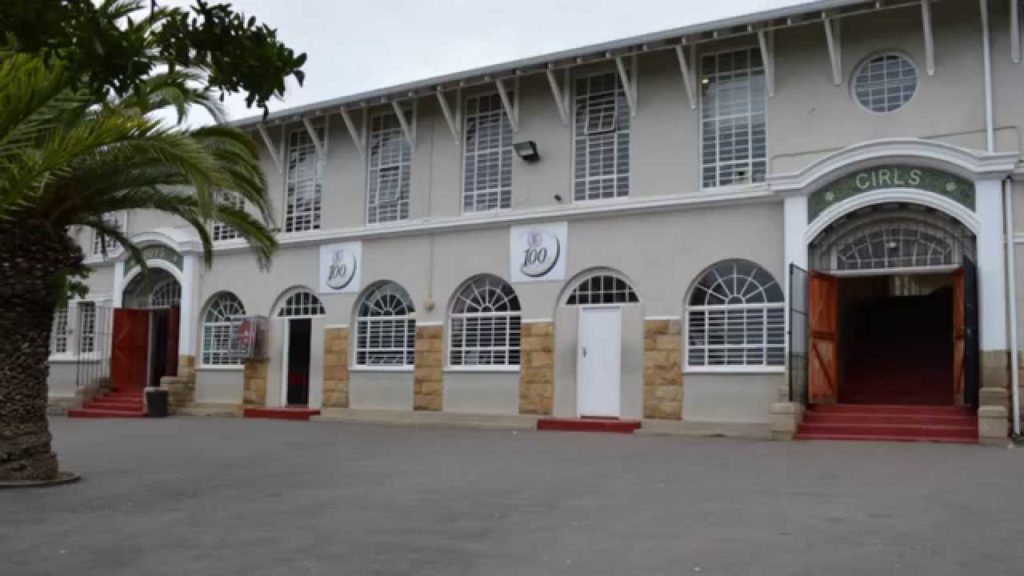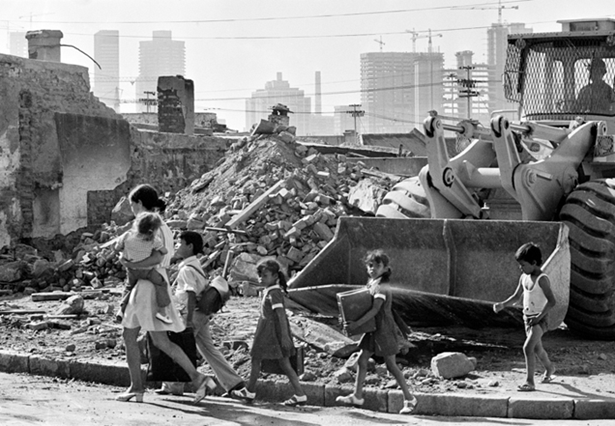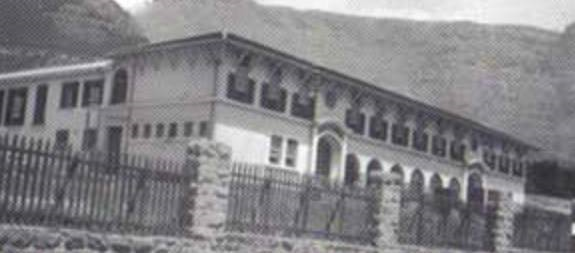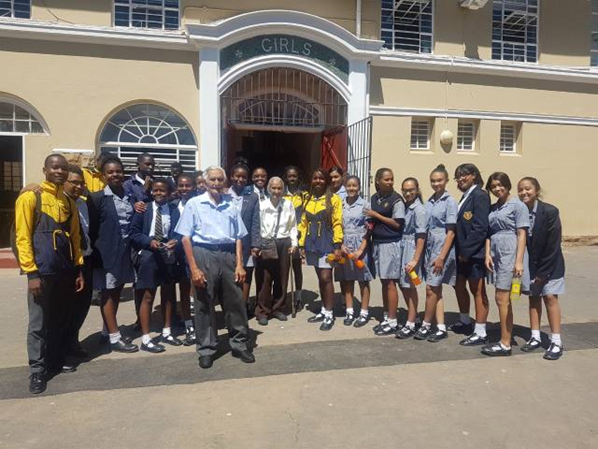The historical Trafalgar High School of District Six

It is not clear if the word “Trafalgar” is dubbed from the Naval Battle of 1805 when the English defeated the fleets of the French and the Spanish at the South West Coast Battle of Trafalgar, but the spelling is precisely the same. The District Six where Trafalgar High School is situated has had its fair share of darkness from the sharp teeth of the apartheid government who initiated Land Act of 1913 where blacks were intentionally removed from the heart of developmental areas to barren and distant areas from the cities. The Group Areas Act was one of those many Acts by apartheid passed in 1950 by South African parliament.
The Act saw many coloured descent residence of District Six losing their homes at the end of 1960s. It marks exactly 54 years since the apartheid government displaced many families and moved them away from the City to the custom-built Capeflats area which is now made-up of Cape Town townships with coloureds being the majority that suffered the forced removals of 1960s.
The main figure associated with the implementation of segregation laws and vicious plight of racism in history is Hendrik Verwoerd who happened to be a Prime minister at the heart of District Six removals. District Six plight was as a result of the Group Areas Act implementation which meant that the area of District Six would be occupied by white residents. This is the period where many black South Africans from the District Six emerged as activists and artists joining in to fight in the struggle of District Six. The District Six was inclusively a mixed-race area with coloureds being the majority in the black race. The removals meant the Trafalgar High School students residing in District Six would commute from the Capeflats as many of them lost their homes. The removals of 11 february 1966 according to the South African History Online followed the 1901 displacement of Black people who were moved from District Six to Ndabeni previously called Uitvlugt.

Trafalgar High School is one of the great and remarkable schools in Cape Town which has produced fine prominent figures who went on to become household names in the history of South Africa. According to the narrative of the South African history website, the school was found under difficult and trying times of apartheid government. It enlightens that after the neglect imposed towards the education and quality of non-white students by the Cape School Board Dr Abdullah Abdurahman, who was the president of African Political Organisation (APO) from 1904 and the first Coloured to be elected as the City Councillor advised the Cape School Board for a new school to be built with a focus to non-white students excellence. The South African History Online states that the need for intervention to the betterment of non-whites education emerged from the displeasure in a newspaper by the African Political Organisation (APO) in August 1911, after the Cape School Board failed to establish scholarships for non-white schools.
The Cape School Board finally gave way to the plea of Dr Abdullah Abdurahman and Trafalgar High School was found under the honour of Dr Abdullah Abdurahman in 1912 which was mainly for non-white students granting the school over R64 000 in pounds to build a new school. Dr Abdullah Abdurahman is said to have been born in Wellington near Cape Town on the 18th December of 1872 from the middle class coloured moslem family. His parents afforded him good education from semi-private English schools both in Wellington and Cape Town and went abroad to do his medical studies Graduating at the University of Glasgow Scotland in 1893 as a Physician. Upon graduation in 1893 he came back home and started his private practice as a medical doctor. His political career was established when he was elected as the president of the APO (African Political Organisation) in 1904 which later became African People’s Organization. According to the South African History Online, though he fought many political battles for Coloured community and the Act of 1909, he was often criticised by other Black races that his efforts were directed only to Coloured people. Another prominent figure during the establishment of the Trafalgar High School is Harold Cressy.
According to the records of South African History Online, Harold Cressy was born in the province of Natal in Rorke’s Drift on the 1 February 1889 and later moved to Cape Town where he furthered his studies by the help of the City councillor Dr Abdullah Abdurahman. Harold Cressy became the first principal of the newly found Trafalgar High School in 1912 but was able to resume the responsibility in 1913. Mr Cressy, as per the history was the first Coloured person to obtain a Bachelor of Arts degree from the esteemed University of Cape Town.

Trafalgar was finally established with Harold Cressy being the first principal of the Trafalgar High School. The Cape School Board gave the school the limitation of five teachers, 32 girls and 28 boys to the total of 60 students.
Trafalgar survived many attempts by the apartheid government at the wake of Group Areas Act and the removal of non-whites from District Six. The school resisted every attempt to protect its existence. The school produced notable Alumnus such as: Judge Siraj Desai from the Western Cape Division Judiciary, the late Abdullah Mohamed Omar a politician and former minister of Justice, Abdullah Ibrahim the composer and pianist; the list is endless and credit goes to the sacrifices made by those who believed in Black excellence.
Another attempt to close Trafalgar High School according to South African history came in 1984 when the apartheid government tried to change the school to whites only. The political unrest of 1985 State of Emergency was one of the most challenging times for the school as it meant students would not be studying and that threatened the existence of the school. The 1985 State of Emergency is dubbed the beginning of the end of apartheid regime. Alex La Guma born in 1924, the late novelist and political activist who was the leader of South African Coloureds People Organisation (SACPO) is one of the prominent figures produced by Trafalgar High School and fought a hard battle to keep the school running for the generation of non-whites students. Another mark which made it difficult for apartheid government to get its way at Trafalgar High School is the daughter of Abdullah Abdurahman, Zainunnisa Cissie Gool, born 6 November 1897. Mrs Gool was a lawyer and anti-apartheid activist, a civil rights leader who also came from the capable hands of Trafalgar High School. Mrs Gool worked for the City council representing the District Six and was the only non-white woman and the first to work for the city council.

Trafalgar High School has been on the news because of its achievements and the quality it produced, with the prominence of its rich history, it always attracts attention and in recent years the days of glory seems to have been replaced by celebrations of history or being in the news for the wrong reasons. In 2017 its principal Nadeem Hendricks was acquitted by the Cape Town High Court after being accused of corruption, an image which tainted the beautiful history of the school but only to find out the school SGB was responsible for the corruption owning up to the offence. Nadeem Hendricks retired a free man in 2018 after spending 40 years of his life first being a student, then a teacher and the principal. Though disappointed at the unfortunate state of his accusation he remained proud of his time and efforts spent at the school, says an IOL article of the 25 July 2017 by Marvin Charles.
Trafalgar High School celebrated its 100th year birthday in 2012 and officially became a centenary joining other legendary prominent establishments. It continues to be the mark of history that defied apartheid for decades and coming tops. Retired Nadeem Hendricks left an error of rich history which the newly appointed principal Salwa Southgate will have the responsibility to uphold and protect its fertility. Cape Town cannot celebrate its political struggles without the mention of Trafalgar High School.
Ends/ 1500 words
